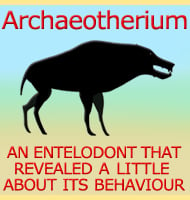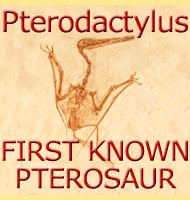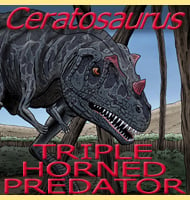In Depth
Palaeontology as we know it today has its foundation in nineteenth century Europe and dinosaurs first began to be named and classified in England in the first half of that century. As the first named dinosaur, Megalosaurus was the first dinosaur genus to have a taxonomic placement amongst other recognised animals, however this also led to it being becoming what is termed a ‘wastebasket taxon’ where any remotely similar remains are attributed to the genus. Later study of fossils attributed to Megalosaurus has revealed that some of the remains represent different animals upon a genus rather than a species level and it was such a discovery that led to the naming of Magnosaurus.
In 1923 Friedrich von Huene named a new species of Megalosaurus from very partial remains from the Inferior Oolite of England as M. nethercombensis. In 1926 von Huene created the species M. lydekkeri from the description of some teeth. In 1932 however von Huene created a new genus for these two species as Magnosaurus with the type species being Magnosaurus nethercombensis with Magnosaurus lydekkeri still being based upon a tooth description.
It is with the 1932 creation of Magnosaurus that things start to get complicated since von Huene also created a third species of M. woodwardi based upon a tibia (lower leg bone). At this time von Huene also classified this tibia as belonging to a new species of Sarcosaurus called S. andrewsi, but also renamed the Sarcosaurus type species as Magnosaurus woodi. In 1956 von Huene swayed in favour of Sarcosaurus having priority although in 1974 S. andrewsi was reclassified as a species of Megalosaurus, although many other researchers continue to treat it as a nomen dubia. Further classification arose in 2003 when a paper by Rauhut proposed that Magnosaurus and Eustreptospondylus were the same genus of dinosaur because they both share an expanded tip to their lower jaw as well as an enlarged front tooth. Such a change would mean that Eustreptospondylus would only exist as a junior synonym to Magnosaurus.
Today both M. lydekkeri and M. woodwardi are both considered to be dubious species of Magnosaurus due to the overall lack of identifiable characteristics. Sarcosaurus and Eustreptospondylus are also sometimes written as the additional species of M woodi and M. oxoniensis. Universally however only the type species of Magnosaurus, M. nethercombensis is recognised as being valid.
As a dinosaur Magnosaurus inhabited north-western Europe at a time when much of the continent was submerged. This resulted in a series of reduced land masses that resembled a continuous island chain across what is now a single continent. The type specimen fossils come from an individual that is estimated to have been around four meters long, though if these remains are of a juvenile as has been suggested, adults would have certainly been bigger. Magnosaurus inhabited the same habitat as the theropods Dubreuillosaurus and Megalosaurus, as well as the sauropod dinosaur Cetiosaurus.
Further Reading
– Die fossile Reptil-Ordnung Saurischia, ihre Entwicklung und Geschichte [The fossil reptile order Saurischia, their development and history]. – Monographien zur Geologie und Palaeontologie, serie 1 4(1-2):1-361. – F. von Huene – 1932. – The osteology of Magnosaurus nethercombensis (Dinosauria, Theropoda) from the Bajocian (Middle Jurassic) of the United Kingdom and a re-examination of the oldest records of tetanurans. – Journal of Systematic Palaeontology, 8(1): 131-146. – Roger B. J. Benson – 2010.










